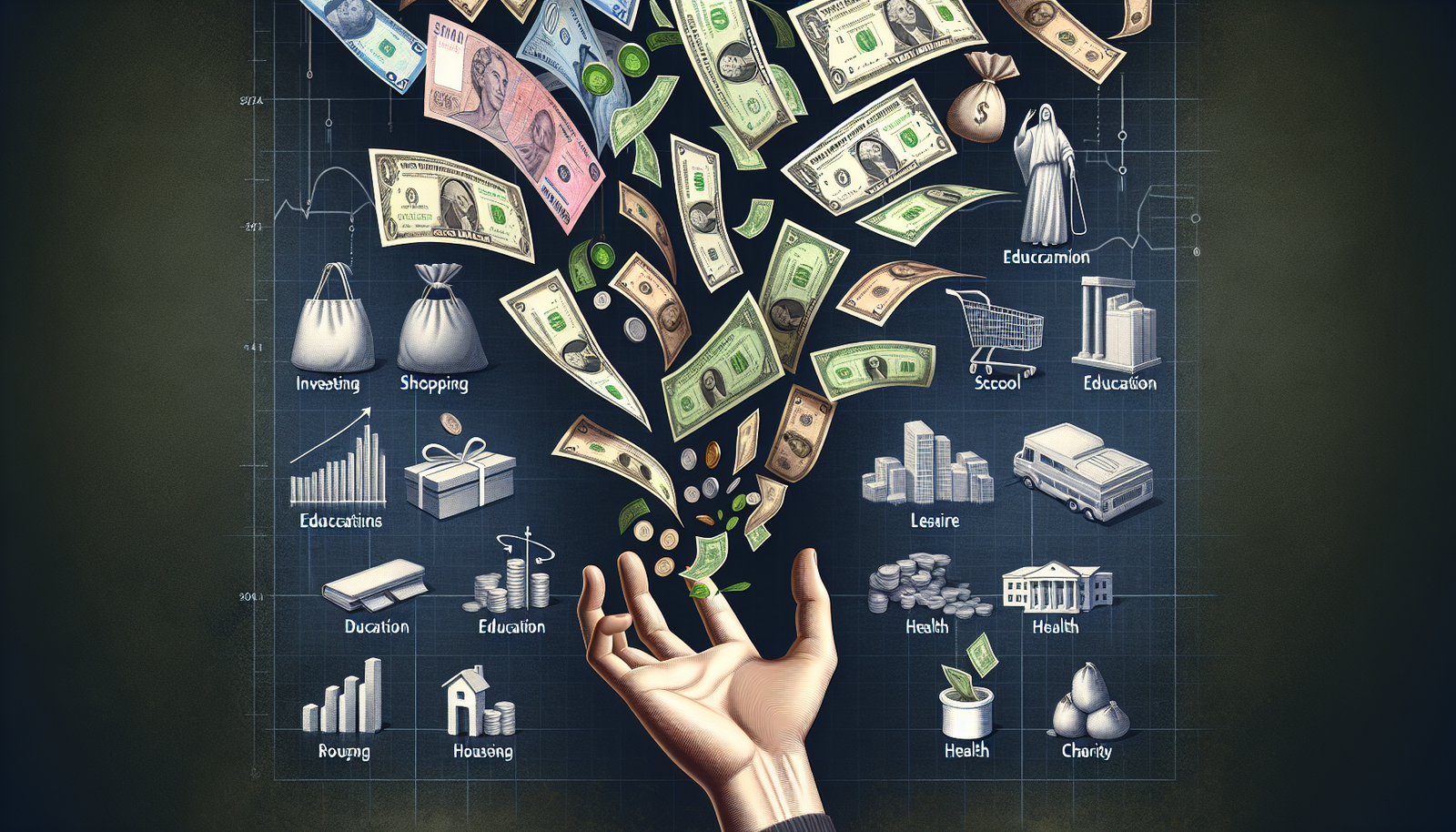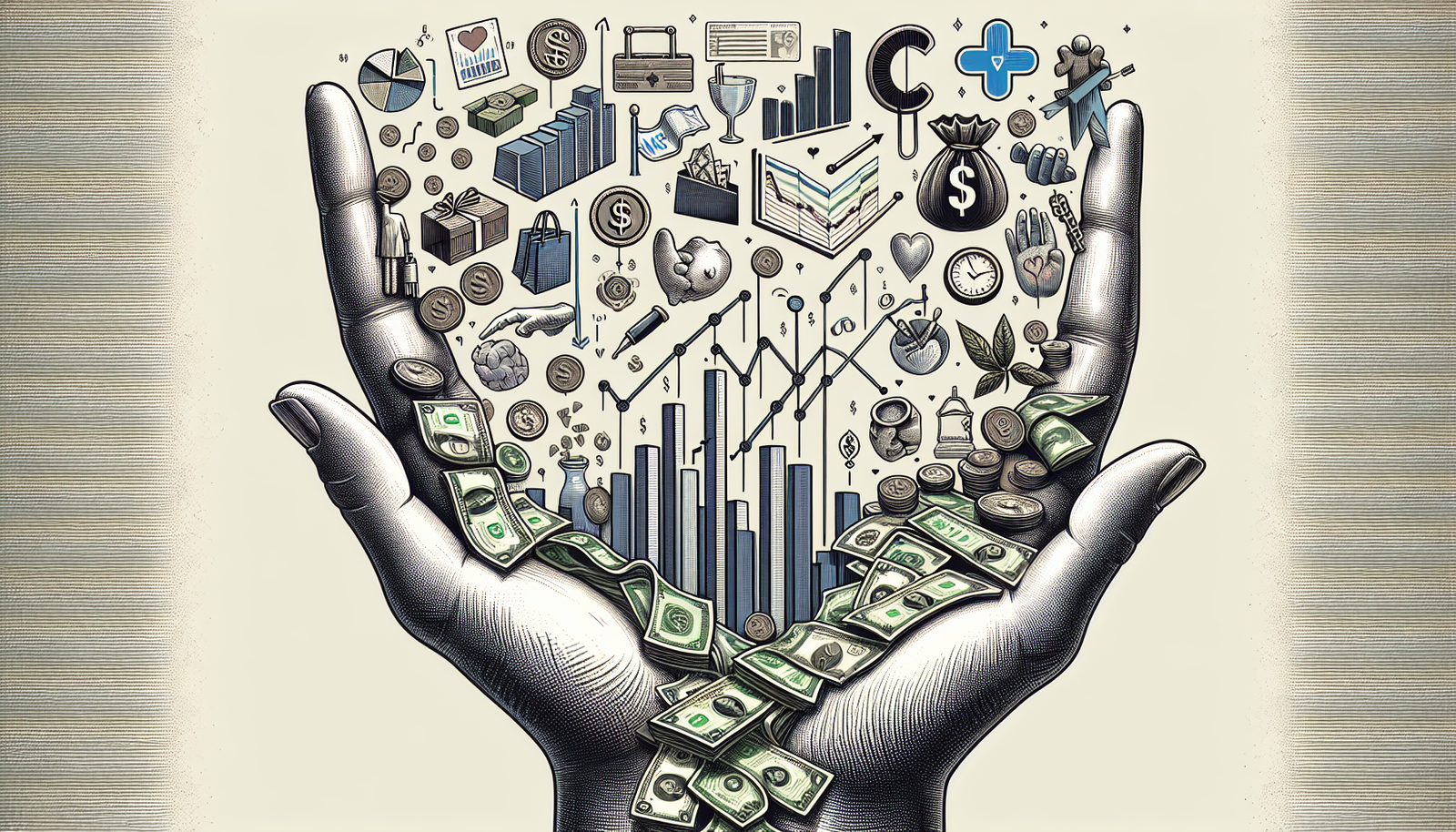
Awaken your curiosity and activate your senses as you traverse the uncharted lands of economic theory with us in “Where Does Money Go.” Picture golden coins slipping through your fingers, flying away on wings of intangible trade and drifting into the veil of financial mystery. Imagine riding on the back of a dollar bill as it zooms from your wallet, taking a mesmerizing rollercoaster ride through banks, businesses, and the pockets of individuals worldwide. Let’s follow a money trail that pulsates with life, illuminating a path shrouded in the cryptic, yet intrinsically captivating world of finance. By journey’s end, you’ll be privy to the clandestine voyage your hard-earned cash undertakes every time it flutters from your grasp. Onward to discovery!

Understanding Money Circulation
Money circulation is akin to the bloodstream of any economy, functioning as the ubiquitous lifeline that keeps the system thriving and vibrant. When you earn and spend money, it doesn’t just vanish into thin air but is passed along in a grand daisy chain of transactions.
The concept of money flow
Imagine money as a perennial river flowing without respite. It flows from one pocket to another, fueling consumption, investments, and economic growth all the way. Every time you pay for your groceries or invest in stocks, it’s not just about you and your bank balance. You are part of an intricate system of money flow contributing to the wider economy.
Current economic system
Our current economic system is capitalist, characterized by private ownership and free markets where supply and demand drive prices. Importantly, this system thrives on spending because every dollar spent contributes to the economy, stimulating demand, which, in turn, spurs production and generates more jobs.
Role of central banks in money circulation
Central banks, such as the Federal Reserve in the United States, play a pivotal role in keeping this circulation smooth and balanced. They control the money supply – increasing it to spur economic growth or shrinking it to prevent the economy from overheating. Essentially, they are the heart pumps ensuring that the lifeblood of the economy flows seamlessly and healthily.
Where Money is Spent
Your hard-earned income can be divided into various pies like living expenses, debt repayments, leisure activities, and investments.
Cost of living
The most significant way you spend money is by covering the necessities of life: accommodation, food, education, healthcare, and more. Your expenditures on these areas are considered a noiseless engine driving the economy.
Debt repayment
Another significant chunk of your paycheck may be journeying towards debt repayment. From student loans to credit card bills, mortgage payments, and car loans, debt is an indelible part of many lives.
Entertainment and travel
Then comes money spent on experiences that enhance the quality of life. That cozy book lined up on your nightstand? The movies you watch? The concerts you attend? The beautiful places you explore? All these contribute to a more textural color palette of the economic picture.
Investments
The money you put aside for the future also falls into the river of capital flow. Investments in real estate, the stock market, retirement savings are not only avenues for individual growth but crucial catalysts for economic growth.
Where Do Companies Invest Money
While consumers maintain a certain money flow, businesses are equally instrumental in circulating money in various directions.
Research and development
Businesses spend a substantial amount on research and development. This is money funneled towards innovation and improvement, leading to newer and better products and services.
Employee salaries
Money invested in employee wages and benefits stimulates the economy directly. After all, this is the money that forms the income stream for many households.
Infrastructure investment
Companies also invest in physical and digital infrastructure, be it office buildings, machines, software, or equipment. These investments not only enable businesses to function and grow but also create jobs.
Marketing and advertising
Money spent on marketing and advertising helps generate demand for a company’s products or services. Besides, it provides revenue for media and advertising companies, further stimulating the economy.

Role of the Government in Money Usage
The government plays an imperative part in the circulation of money, garnering funds via taxation and judiciously spending to provide public goods and services.
Tax collection
The government collects taxes from individuals and corporations. This money is used to fund various public services and institutions, thus flowing back into the economy.
Public infrastructure and services
The government spends money to improve public infrastructure — roads, schools, hospitals, parks — and provide public goods like police and fire services, fostering a better quality of life for all.
Public sector wages
Government employees, from post office workers to teachers, firefighters, and public health officials, are all paid out of taxpayer funds. This money circulates back into the economy as these employees buy goods and services.
Government aid and welfare programs
Money also flows into various welfare programs like unemployment benefits, food and housing assistance, and health care. These offer a safety net to those in need, ensuring that they remain functional members of the economy.
Impact of Inflation on Money
Inflation, the silent predator in the financial jungle, can stealthily erode the value of your money.
Definition of inflation
Inflation refers to the general increase in prices and decrease in the purchasing value of money. If the inflation rate exceeds the growth of earnings, it means the money’s purchasing power is dwindling.
How inflation dwindles money value
When inflation rises, prices rise. So the same amount of money buys you less than it did before. Your hard-earned savings might suffer, especially if the interest rates are lower than the inflation rate.
Inflation and purchasing power
The correlation between inflation and purchasing power is inverse. As inflation goes up, the purchasing power of the money goes down. In other words, inflation can eat into your purchasing power, making it harder to afford goods and services.
Money Depreciation
Just as assets like cars and buildings can depreciate over time, so can money.
Reasons for money depreciation
Money value can decrease or depreciate due to factors ranging from inflation, rising interest rates, or a weak economy. A decline in a country’s political or economic stability can also depreciate its currency value.
Effects of money depreciation on the economy
Depreciation of money can lead to higher inflation, decreased purchasing power, and lower economic growth. However, it can also make a nation’s exports cheaper, potentially boosting trade and balancing the negative impacts.
Strategies to prevent money depreciation
Maintaining political and economic stability, controlling inflation, and prudent fiscal policies can help prevent the depreciation of money.
Money in Savings and Investments
Savings and investments are crucial to personal financial health and the larger economy.
Role of banks in managing savings
When you deposit money into a bank, it doesn’t just sit idle. Banks lend that money to others for things like mortgages or business loans, facilitating further economic activity.
Understanding investment vehicles
Investment vehicles like stocks, bonds, mutual funds, real estate not only provide potential income and wealth expansion for individuals but also provide the required capital for businesses to innovate, expand, and hire.
Retirement planning and pension funds
The money saved for retirement doesn’t just offer a safety net for the golden years, but also plays a critical role in the economy. Pension funds, constituted from these savings, are among the largest investors in global capital markets.
Charitable Donations
The act of giving doesn’t just warm your heart but also has a pulsating effect on the economy.
Impact of donations on economy
Charitable donations fuel non-profit organizations that address social issues, create jobs, and contribute to GDP. Moreover, they help stimulate demand as these organizations purchase goods and services to carry out their mission.
Types of charitable organizations
There are numerous types of charities, addressing various causes from healthcare, education, poverty alleviation, environmental conservation to arts and culture. Each plays a unique role in enhancing societal well-being and economic activity.
Fund allocation in charities
The money donated to charities is used to fund a variety of activities — conducting research, providing services, organizing awareness campaigns, and offering direct aid to those in need.
Underground Economy and Black Money
Not all parts of the economy are well-lit; some lurk in the shadows, imperceptible yet impactful.
Definition and scope of black money
Black money refers to income illegally obtained or not declared for tax purposes, coloring parts of the economy ‘black’. This unaccounted realm, also known as the shadow or underground economy, might range from illicit activities to unreported income from small jobs.
Impact of black money on economy
Black money can lead to a loss of tax revenue for the government, exacerbation of income inequality, and an unregulated economic sector. It can undermine the economy’s integrity, skewing economic statistics and making economic policy decisions uncertain.
Efforts to curb black money
Tackling black money requires robust regulation, diligent tax compliance, stringent penalties, and sustained efforts to enhance financial transparency and integrity.
Future of Money
As with every other aspect of our lives, the future of money is increasingly digital.
Impact of digitalization on currency
The advent of digital technologies is transforming how we move and use money. Online banking, digital wallets, peer-to-peer payment apps have made handling money supremely convenient, shaping a future where physical cash might become obsolete.
Cryptocurrency and blockchain
The emergence of cryptocurrencies like Bitcoin points to an even more drastic monetary future, free from central bank control. Powering these digital currencies are blockchain technologies that promise transparency, security, and speed.
Mobile payment systems and wallets
Mobile payments and digital wallets offer ease and convenience, revolutionizing everyday transactions. As more people embrace these technologies, wallets might become weightless, and checkouts might become cashless.
In the labyrinth of our economy, each act of spending, saving, taxing, or donating money keeps the cogs turning smoothly. Understanding the journey of money helps us appreciate our place in the larger economic machinery and recognize the rippling impact of our financial choices. After all, money always returns. It’s all a matter of where, how, and to whom.

Leave a Reply